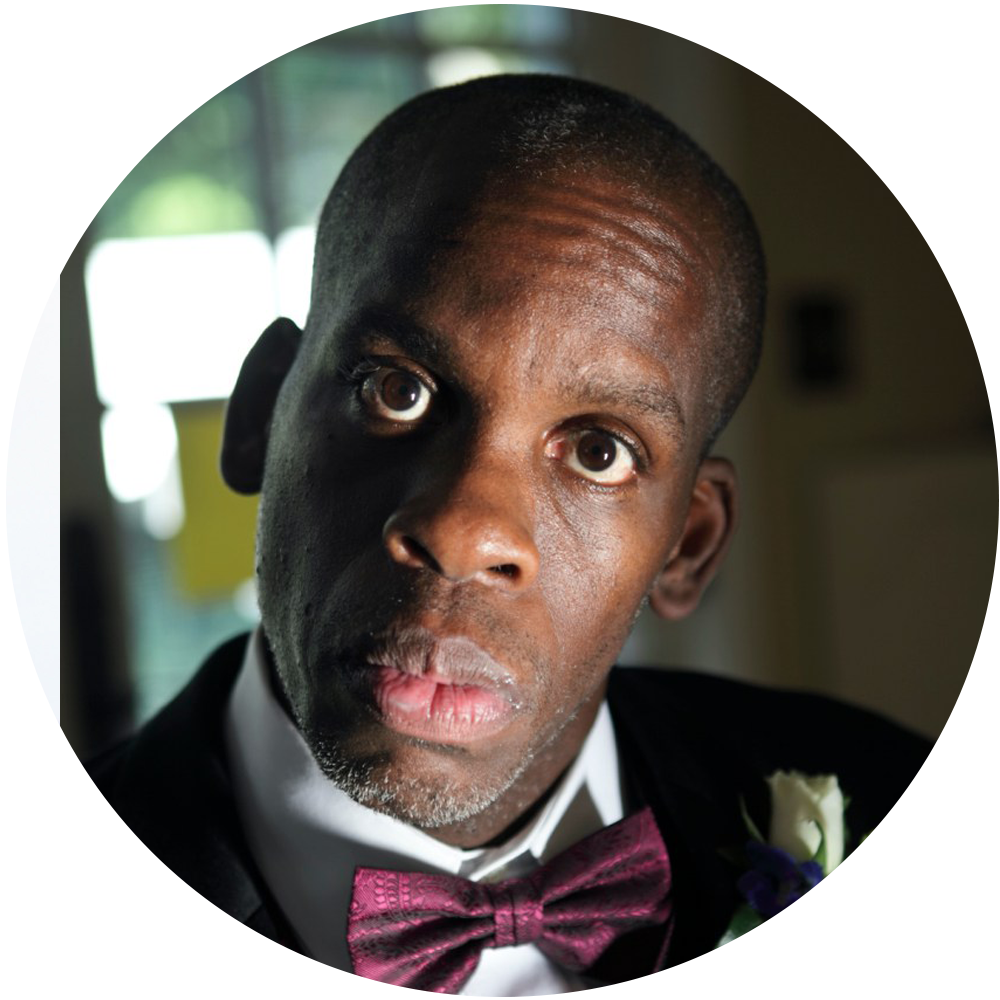Beyond One Dimension: Portrayals of Disability in Film & Television
The media has a long track record of using stereotypes to portray minority groups. But the media also has a huge potential to empower the minority groups by representing them correctly. Let’s turn our attention to a pressing issue of representation: depictions of people with disabilities in film and television.
As a person who stutters myself, I have often been disappointed and frustrated by how the media characterizes people who live with a disability. For example, though progressive in many respects for the early 2000s, one television series includes a character who stutters. The character is written as dependent, comedic, and not very smart. Throughout the series, his friends chide him to stop stuttering, and his stutter is only “cured” by holding hands with the girl he falls in love with.
Now, I’m sure it is obvious to you that this portrayal of stuttering is neither accurate nor authentic. For one, stuttering cannot be “cured,” and you can’t flip a stutter on and off like a light switch. Unfortunately, this and other disabilities are frequently presented as oversimplified and the characters themselves as one dimensional, stereotyped, and lacking agency.
In fact, there are many tropes that characters with disabilities can fall into. These tropes perpetuate untrue assumptions about those with a disability. According to a post published by the Institute for Human Rights at the University of Alabama at Birmingham, three main tropes are the victim, the villain, and the inspirational hero.
The Victim
In this portrayal, a character with a disability is shown as being helpless, needy, restrained, and unhappy. They are pitied by those around them, and they must be “cured” or change themselves, i.e. live without a disability, in order to achieve a fulfilling life. Victim depictions reinforce the stereotype that people with disabilities must somehow be “fixed” in order to be like everyone else. In reality, people with disabilities can live a happy, meaningful life with their disability.
While some may choose to address or change a certain aspect of their disability in order to fit a societal standard, others may be content not doing so. It is a very personal decision, and it is not one taken lightly. For example, there is a contentious debate regarding whether or not Deaf children should learn how to speak in addition to also learning sign language.
Also related to this victim portrayal is how popular media often de-sexualizes people with disabilities. Because of their disability, which inherently makes them weak and dependent, people with disabilities apparently do not care or want to be in a sexual relationship or have sex altogether. This is completely wrong. Like all human beings, people with disabilities can want to have (or not have) sex, too, as long as they are of age and it is consensual.
The Villain
In this portrayal, a character with a disability is shown as being dangerous, deadly, or maniacal. We especially see this depiction in films that have psychopaths (Christian Bale as Andrew Bateman in American Psycho, for example) or those suffering from severe mental disorders, such as schizophrenia. Clearly, depicting a person with a disability as evil may make the public fear and distrust them. Audiences may think that people with disabilities need to be locked away from the rest of society because they are uncontrollable and impulsive.
In reality, mental disorders, such as schizophrenia or Obsessive Compulsive Disorder (OCD), are incredibly complex and affect each person differently. It is next to impossible to capture the nuance of these disorders in the media, so, unfortunately, characters are written with stereotypical, recognizable traits of them, so the audience can be entertained with guessing which disorder it is (which is extremely problematic). For example, a portrayal of OCD in a film or television show may show a character repeatedly washing his/her/their hands. However, another key aspect of OCD are intrusive, unsettling thoughts, which are not being depicted.
The Inspirational Hero
In this portrayal, a character with a disability is shown as valiantly overcoming their disability despite hardships, or they function to teach another character a life lesson. As mentioned in the victim trope, the inspirational hero trope leads audiences to believe that a person with a disability can be neither happy nor successful unless their disability is somehow “cured.”
In addition, this trope is often employed to portray a person with a disability as having a special power. We see this especially in depictions of autism. Autistic characters are shown as being extraordinarily gifted and talented, such as having a photographic memory or rare artistic ability. However, the overwhelming majority of individuals with autism do not have these “superpowers,” and thus what we see on the big screen is inaccurate and only adds to false misconceptions we have about people living with disabilities.
It is hopefully evident at this point that film and television have a long way to go in realistically portraying individuals with disabilities. In addition to the three tropes explained above, there is also the major issue of including a character with a disability in a show or movie, but making the disability the defining trait about them. For example, a character in a wheelchair may have an amazing singing voice and love playing basketball, but the script pigeonholes her into just being “that character in a wheelchair.” In other words, the character’s disability is the most interesting thing about them. This is unfair since other characters are written as deep and complex, while characters with disabilities are one dimensional and flat. In real life, people with disabilities have interests and passions that are not solely related to their disability. Why should popular media not represent that reality?
In addition, popular media must focus on how disability intersects with other facets of an individual’s identity, such as race, ethnicity, religion, and sexuality. A Black woman or a gay or transperson with a disability will likely have a radically different life experience than a white, straight man or woman with a disability. Films and television need to depict this diversity, and, in general, the spectrum on which different disabilities can exist. Lastly, directors and production companies must make more of an effort to cast individuals with disabilities as disabled characters, or at least have experts on set who can coach able-bodied characters, scriptwriters, and directors to authentically portray a character with a disability.
Read below for a list of well-known American actors with disabilities as well as films that have gone above and beyond to honestly represent disability. This is not a complete list by any stretch, and the selections are based only on my personal opinion. I used these two fantastic articles by the New York Times (click here and here) to do my research, as well as Jessica Kellgren-Fozard’s YouTube channel.
Films/Television/Theater:
Photo: Film Daily
A Quiet Place: Released in 2018, A Quiet Place is a science fiction horror film that takes place in a world where monsters can hear every sound humans make, so the family communicates in sign language. One of actresses in the film, Millicent Simmonds, is Deaf, and the production set also employed Douglas Ridloff, an American Sign Language (ASL) consultant, to coach the hearing actors and teach them ASL.
Photo: LA Times
Sesame Street: Sesame Street, a beloved children’s show, introduced Julia, a Muppet with autism, in 2017. Many different experts collaborated together in order to ensure that Julia was authentically represented.
Photo: TV Insider
Everything’s Gonna Be Okay: This comedy show about a young man who unexpectedly becomes the guardian of his two teenage half sisters stars Kayla Cromer, a young actress with autism, who plays an autistic character on the show.
Image: Wikipedia
Loop: An animated short film produced by Pixar Animation Studios, Loop features two characters, Renee, a non-verbal autistic girl, and Marcus, a talkative boy. Aboard a canoe on a lake, the two characters work to communicate with one another. While making the film, the directors and producers were advised by the Autistic Self Advocacy Network.
Photo: Time
Deaf West Theatre’s Spring Awakening: The musical Spring Awakening, based on the coming-of-age play by German playwright Frank Wedekind, was performed on Broadway with a cast of both hearing and Deaf actors, and songs were sung in both spoken language and ASL. It was nominated for three Tony Awards and closed in 2016.
Actors:
Photo: Click2Houston
Marlee Matlin: Matlin is an Academy Award winning actress, producer, author, and educator. Her break-out role was in the film, Children of a Lesser God, which was released in 1986. She has also appeared in a variety of TV programs, such as her five-year stint on the ABC Family drama, Switched at Birth, where she starred alongside other Deaf, hard of hearing, and hearing actors. She is a national spokesperson for the American Red Cross.
Photo: IMDB
Steve Way: Way is an actor, comedian, and substitute teacher. Born with Muscular Dystrophy, Way is a vocal advocate for disability awareness and education. He has spoken across the country, and his most recent role was in the hit show, Ramy, where he stars alongside Egyptian-American comedian Ramy Youssef.
Photo: NBC News
Ryan O’Connell: O’Connell is an actor, writer, director, and advocate for the LGBTQ+ and disability community. In 2015, he published a memoir, I’m Special: And Other Lies We Tell Ourselves. He also wrote, produced, and starred in the Netflix comedy show, Special, which follows a gay man with cerebal palsy and his relationships with his friends, co-workers, and family.
Photo: Vulture
Photo: Wikipedia
Lauren Ridloff: Ridloff is an actress who stars in the television show, The Walking Dead. She was also cast as the lead role for a play adaptation of Children of a Lesser God on Broadway. She will play a superhero in the Marvel Cinematic Universe film, Eternals, to be released in 2021.
Photo: Shades of Noir
Leroy F. Moore Jr.: Moore is the founder of Krip-Hop Nation, whose mission is “to educate the music, media industries, and general public about the talents, history, rights, and marketability of hip-hop artists and other musicians with disabilities.” Moore himself is a leading disability rights advocate and is committed to advancing social justice causes, such as calling attention to police brutality against those with disabilities.
Vocabulary list:
Pressing (adj.): important, noteworthy, significant
Depiction (n.): a representation of something in words, images, or film
Stutter, stammer (n.): a speech disfluency characterized by repetitions or blocks for certain words or phrases, which can affect the clarity and flow of a person’s spoken speech
Progressive (adj.): forward-thinking
Chide (v.): to scold, disapprove
Agency (n.): freedom, autonomy
Trope (n.): stereotype
Perpetuate (v.): to continue
Fulfilling (adj.): successful, happy, meaningful
Reinforce (v.): to strengthen, increase
Contentious (adj.): debated, controversial
Inherently (adj.): essential, natural character of something
Consensual (adj.): to be in agreement
Maniacal (adj.): crazy, like a maniac
Severe (adj.): very serious
Impulsive (adj.): without thinking, act in the moment
Nuance (n.): details, a deeper, more complex meaning
Intrusive (adj.): not invited, pushy
Unsettling (adj.): upsetting, disturbing
Valiantly (adj.): bravely
Employ (v.): to use
Evident (adj.): clear
Pigeonhole (v.): to categorize, limit somebody/something to a box
Intersect (v.): to overlap
Facet (n.): a component, part
Radically (adj.): extremely
ABOUT THE AUTHOR
A Texas native, Bianca Navia is currently in her senior year at Arizona State University pursuing a dual major in Political Science and Global Studies. She is most passionate about international affairs, diplomacy, foreign languages, traveling, and teaching. A fun fact about her? She’s the oldest of four sisters in a big Cuban-Italian-American family!



















